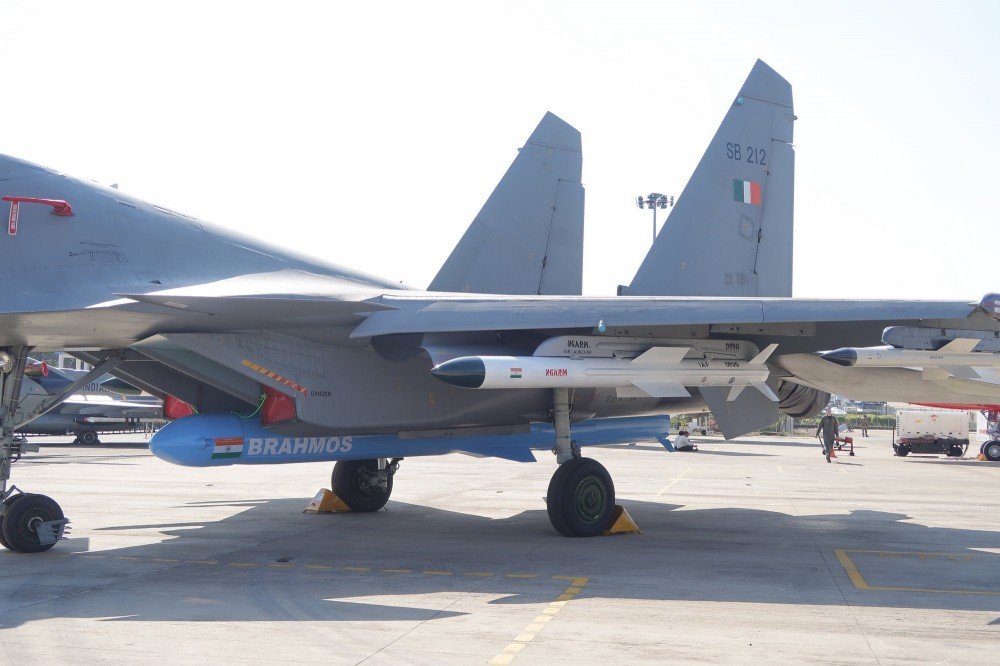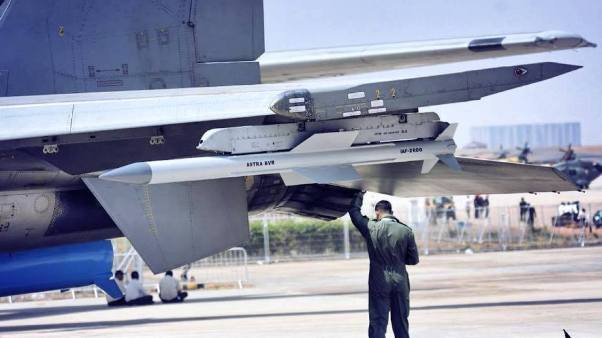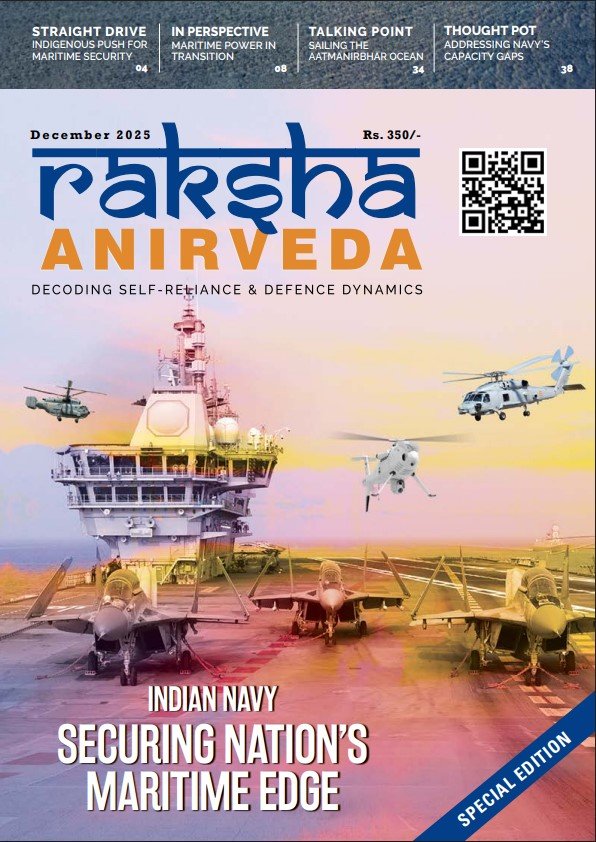The successful testing of the Astra Beyond Visual Range Air-to-Air Missile (BVRAAM) in India has marked an important turning point in the country’s defence capabilities. The missile is now outfitted with an indigenous radio frequency (RF) seeker. The increasing self-reliance of India on advanced missile technology was exemplified in July 2025 by the launch of a Su-30 MKI fighter aircraft off the coast of Odisha.
The Development of Astra’s Seeker Technology
During its early development and production, the Astra missile used a Russian-made multifunction monopulse Doppler active radar seeker called the 9B-1103M seeker. Concern Morinformsystem-Agat, a prominent Russian company for radar and seeker technology, developed this seeker. This seeker, originally made for the Russian R-77 (RVV-AE) missile, gave Astra important abilities for guiding itself at the end of its flight, like finding its target on its own, and strong features to resist jamming.
The Defence Research and Development Organisation (DRDO) developed an indigenous Ku-band active radar seeker to replace the Russian unit as part of India’s initiative to achieve self-reliance. This seeker was first effectively tested in 2017. It is equipped with sophisticated capabilities for target acquisition and engagement in intricate electronic warfare scenarios. It provides the launching aircraft with the ability to disengage or address other threats, thereby enabling a genuine “fire-and-forget” capability.
Seeker Comparison
The Russian 9B-1103M seeker operates within the X-band frequency range (approximately 8–12 GHz). Many air-to-air missile sensors worldwide, including the R-77 (RVV-AE) missile, extensively employ this band. X-band sensors offer an ideal blend of atmospheric penetration, resolution, and range. Nevertheless, they are also confronted with obstacles because numerous jamming systems and modern fighter radars function within the same frequency band, rendering them more susceptible to electronic countermeasures (ECM).
On the other hand, the DRDO in India developed the Ku-band seeker, which operates at approximately 12–18 GHz. There are numerous advantages to transitioning to a higher frequency. Ku-band seekers can achieve comparable or superior resolution with smaller antennas, which facilitates the development of more compact designs. For example, the Russian seeker has a slightly larger diameter than the DRDO seeker, which has a 140 mm antenna and weighs approximately 12.5 kg. Also, using higher frequencies allows for better angle accuracy and the ability to distinguish targets more effectively in crowded areas. Nevertheless, Ku-band signals are subject to a slightly higher degree of atmospheric attenuation than X-band signals, which can restrict the optimum detection ranges in specific circumstances.
The Defence Research and Development Organisation (DRDO) developed an indigenous Ku-band active radar seeker to replace the Russian unit as part of India’s initiative to achieve self-reliance. This seeker was first effectively tested in 2017. It is equipped with sophisticated capabilities for target acquisition and engagement in intricate electronic warfare scenarios
The DRDO seeker boasts a wider gimbal angle of ±55 degrees in comparison to the Russian seeker’s ±45 degrees, which is one of its most noteworthy advantages. This expanded field of view enables the missile to engage targets at greater off-boresight angles, thereby increasing the launch aircraft’s adaptability during combat manoeuvres. It helps Astra engage targets that are manoeuvring at a rapid pace, increasing the likelihood of a successful strike.
I must caution that no official source fully confirms all numeric details of the Indian seeker. However, DRDO’s Ku-band seeker represents a significant technological advancement in Electronic Counter-Countermeasures (ECCM) within the context of electronic warfare. Although the Russian 9B-1103M seeker is equipped with basic ECCM functions that are well-suited for the 1990s, it is deficient in the sophisticated signal processing techniques that are required to mitigate contemporary jamming. Russia has an improved version of this seeker, but it is not known if Astra uses it. DRDO’s seeker is believed to have sophisticated capabilities, including adaptive signal processing, frequency agility, and enhanced side lobe suppression, which render it significantly more resilient in electromagnetic environments that are frequently contested.

Astra Mk-1 and Mk-2 integration
The indigenous seeker has been gradually incorporated into Astra variants:
Astra Mk-1: The transition from Russian to Indian seekers for production missiles for the Indian Air Force is reportedly underway between 2021 and 2022. Nevertheless, there is a disagreement among open sources regarding whether all Astra Mk-1s that are presently in operational units have fully transitioned to the Indian seeker or if some continue to use Russian units.
The DRDO seeker boasts a wider gimbal angle of ±55 degrees in comparison to the Russian seeker’s ±45 degrees, which is one of its most noteworthy advantages. This expanded field of view enables the missile to engage targets at greater off-boresight angles, thereby increasing the launch aircraft’s adaptability during combat manoeuvres
Astra Mk-2: The DRDO-developed indigenous seeker will be included as standard in this longer-range variant, guaranteeing that all future missiles in this line will be entirely Indian in essential subsystems.
Testing and Performance
Two Astra missiles, which are equipped with the indigenous seeker, were able to effectively intercept high-speed unmanned aerial targets in various combat scenarios during recent tests. The direct hits achieved by both missiles validated the seeker’s performance and the reliability and efficacy of the entire missile system.
The Astra BVRAAM is equipped with sophisticated guidance, navigation, and control systems and has a range of more than 100 km. It is a formidable asset in contemporary air combat due to its indigenous seeker, which guarantees reliable performance across various engagement angles, ranges, and platform conditions
Specifications
The Astra BVRAAM is equipped with sophisticated guidance, navigation, and control systems and has a range of more than 100 km. It is a formidable asset in contemporary air combat due to its indigenous seeker, which guarantees reliable performance across various engagement angles, ranges, and platform conditions.
Manufacturing and Collaborative Development
The research, design, and integration of critical technologies were spearheaded by DRDO, which led to a collaborative effort to develop the Astra missile. Bharat Dynamics Limited (BDL) is accountable for the large-scale fabrication and supply of missiles to the Indian Air Force and Navy. The project also involves more than 50 public and private sector companies, including Hindustan Aeronautics Limited (HAL), which underscores the success of the “Make in India” initiative and the resilience of India’s domestic defence industry.
The DRDO seeker is the only seeker used by the Astra Mk-2, the longer-range variant. This development is a testament to India’s dedication to technological sovereignty in critical defence systems, which was accomplished through the collaborative efforts of DRDO, BDL, HAL, and numerous Indian firms
Strategic Importance
The successful integration of an indigenous seeker not only improves the Astra missile’s lethality and survivability but also represents a significant advancement in India’s capacity to develop advanced, combat-ready systems without reliance on foreign suppliers. This accomplishment fortifies India’s air defence capabilities and inaugurates a new era of technological self-reliance in the military aviation sector of the nation.
In summary, the Astra BVR missile now uses a fully Indian-made seeker created by DRDO, instead of the Russian 9B-1103M active radar seeker it used before. The production of Astra Mk-1 missiles has gradually incorporated the Indian seeker from 2021 to 2022. The DRDO seeker is the only seeker used by the Astra Mk-2, the longer-range variant. This development is a testament to India’s dedication to technological sovereignty in critical defence systems, which was accomplished through the collaborative efforts of DRDO, BDL, HAL, and numerous Indian firms. The Astra missile is a testament to India’s strategic vision of self-reliance and its increasing proficiency in advanced weapon systems.
The writer is the Publisher of Frontier India and the author of the book Foxtrot to Arihant: The Story of Indian Navy’s Submarine Arm.






